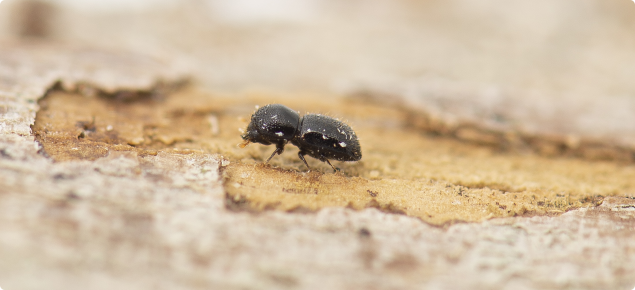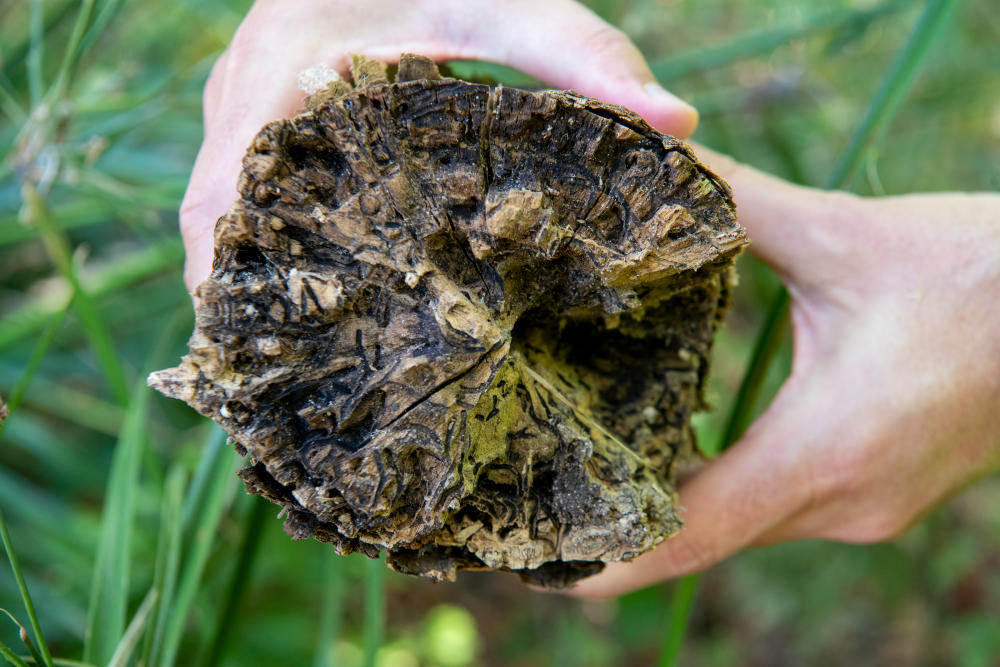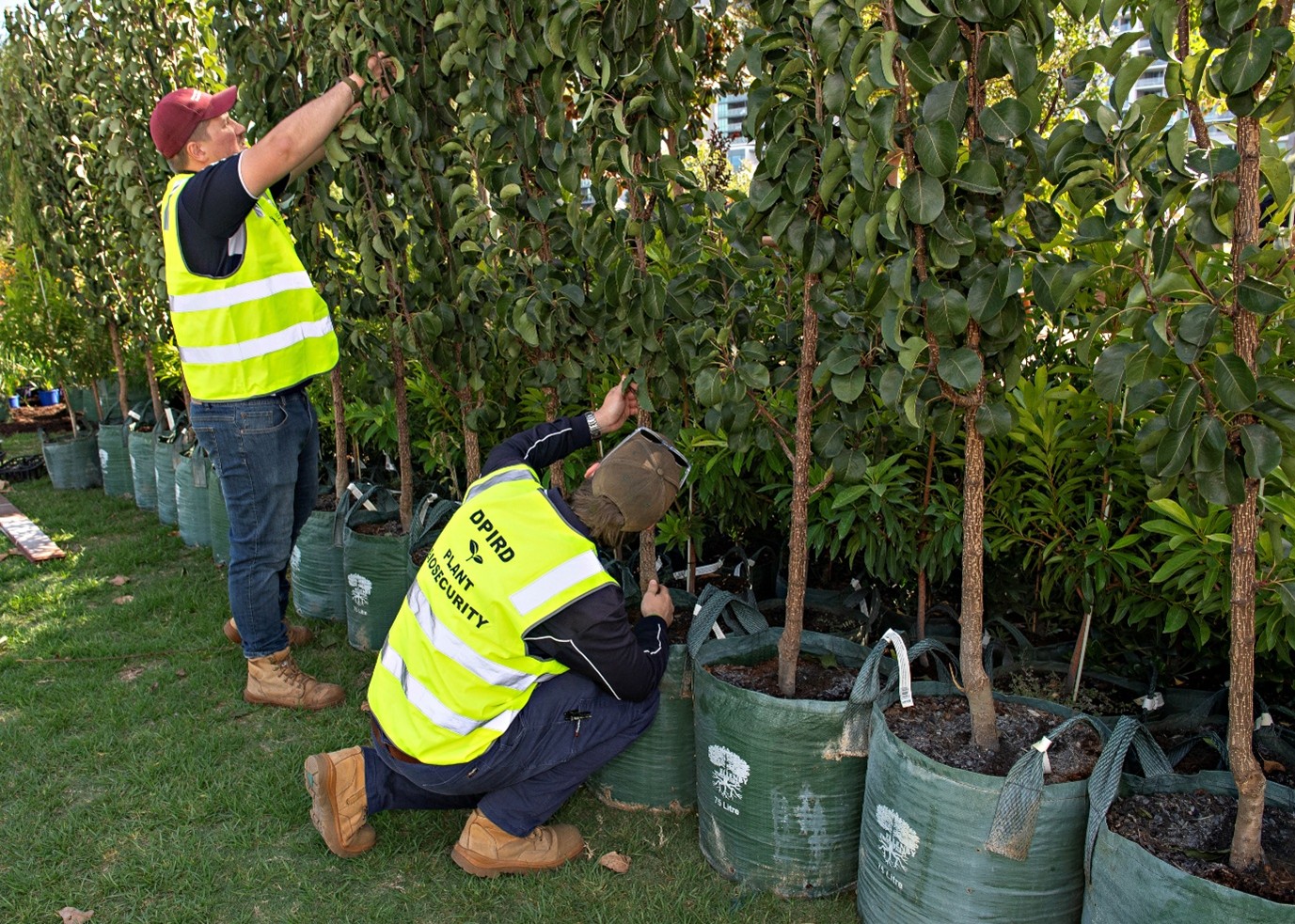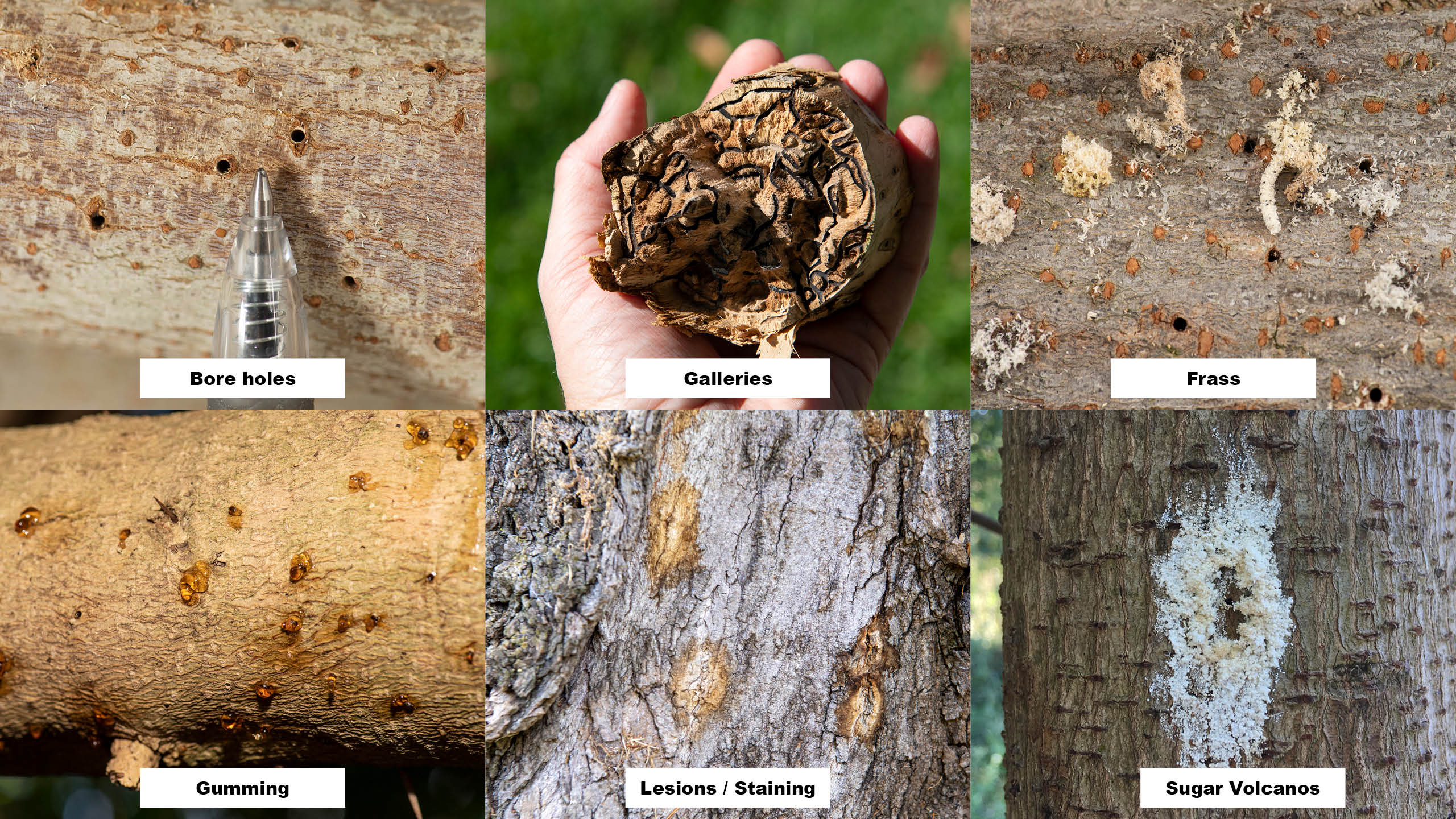
Polyphagous shot-hole borer
Polyphagous shot-hole borer is an invasive beetle species that infests a wide range of trees, causing damage by boring into the wood and spreading pathogenic fungi. A Quarantine Area divided into two zones is in place with rules applied to the movement of wood or plant materials.

About the Polyphagous shot-hole borer
Polyphagous shot-hole borer (PSHB, Euwallacea fornicatus) is a small (approx. 1mm long) beetle native to Southeast Asia that tunnels into the trunks, stems and branches of trees and plants. This beetle is highly invasive and attacks a wide range of plant species, with over 500 documented globally to have been affected.
The department is responding to a detection of this invasive pest in the Perth metropolitan area and has implemented a Quarantine Area (QA). This restriction aims to prevent the spread of the pest by limiting the movement of wood and plant materials.
PSHB was detected in WA in August 2021. Since then, the department has been leading a nationally funded and coordinated biosecurity response. Allowing this pest to spread in WA could have a significant impact on our urban canopy and may pose a threat to our valuable agricultural industry.

Current Situation
The national response to polyphagous shot-hole borer (PSHB) is transitioning from an eradication strategy to a long-term management approach after the National Management Group determined the borer was no longer technically feasible to eradicate.
A national Transition to Management (T2M) response plan is now in place and is being delivered by DPIRD.
This phase of the response includes development and implementation of strategies to slow the spread of PSHB through targeted surveillance, the creation of an Integrated Pest Management Program and provision of support and training for landowners to build capacity for long term management of the pest.
Under the national T2M response plan, DPIRD’s tree pruning and removal program will focus on trees in the outer Perth metropolitan area that pose a risk of spreading the borer outside of the Quarantine Area (QA). All other landowners and managers in the Perth metropolitan area are now responsible for managing borer-affected trees.
DPIRD is committed to protecting Perth’s urban tree canopy and WA’s horticulture industry by working closely with local governments, community groups and industry bodies to build resilience against PSHB.
A new Quarantine Area Notice (QAN), to support the T2M phase of the response, has come into effect. The QAN covers the entire Perth metropolitan area. Movement restrictions on Firewood, green waste, live plants and plant material still apply to help prevent the spread of PSHB.
Suspect an infestation?
Report a suspected PSHB infestation by using the MyPestGuide® Reporter app.
Report via MyPestGuide
Quarantine Area
A Quarantine Area (QA) covering the entire Perth metropolitan area is in place, with restrictions on the movement of wood, green waste, mulch, live plants and plant material.
The QA is split into two zones:
- The Management Zone which covers the inner metropolitan area and is the area of known borer infestation; and
- The Containment Zone which is the area between the Management Zone and the outer boundary of the QA.
Movement Restrictions
To limit the spread of shot-hole borer, the following restrictions apply to the movement of host plant material:
- Host plant material must not be moved from the Management Zone to the Containment Zone or to outside the QA.
- Host plant material must not be moved from within the QA to outside the QA.
- Any machinery, equipment and vehicles used in the processing or handling of wood, including wood mulching and chipping, must be cleaned of all wood and plant material before being moved into the Containment Zone or outside of the QA.
These restrictions apply to host plant material such as unseasoned wood, green waste and mulch that is larger than 2.5 cm in diameter, and live plants with woody stems greater than 2 cm in diameter.
Enter an address into the interactive map below to see which zone and restrictions apply.

What plants are affected?
PSHB causes serious damage to many types of trees and plants with a global host list covering over 500 species. When infested, a plant can show symptoms such as dieback, shotholes, galleries, frass and gumming.
Reproductive hosts are susceptible trees in which both the beetle and the fungus successfully establish and reproduce. The global host list is extensive with over 100 reproductive hosts.
View the list of affected plants and trees in Western AustraliaWA Tree Recovery Program
Western Australians impacted by PSHB can now access rebates to support replanting trees on their properties.
The WA Tree Recovery Program is a $7.2 million program, led by the Department of Water and Environmental Regulation, to help boost Perth's canopy cover.
The program is supporting replanting initiatives by local governments, residents and the Perth Zoo.
Grants provided to local governments support the replanting of three trees for every tree lost to PSHB.
Under the residential rebate program, eligible Western Australian landowners can claim up to $150 for every tree removed under DPIRD authorisation as a result of PSHB.
For more information, please visit https://www.wa.gov.au/service/environment/conservation/wa-tree-recovery
Keep an eye out
Detection of PSHB can be difficult as they are very small – roughly the size of a sesame seed. However, there are several symptoms that can indicate a plant may be infested.
Watch the animation below on YouTube to learn more and find out how to report PSHB sightings.

How does PSHB spread?
PSHB is a tree-boring beetle that has a symbiotic relationship with a Fusarium fungus. It cultivates this fungus inside of plants as a food source for themselves and their larvae. In susceptible species, the fungus kills the plant by restricting or preventing the movement of water and nutrients. This causes symptoms such as Fusarium dieback that eventually leads to plant death. The beetle also causes structural damage by creating tunnels, known as galleries, throughout the plant.
Native to Southeast Asia, PSHB has spread to countries including Israel, the USA South Africa and Argentina, and is now in WA. It is possible PSHB ‘hitchhiked’ its way to Australia on untreated wooden articles and packaging materials. Subsequent spread can be aided by the movement of infested wood (such as pruned trees or unseasoned firewood).
Actions to minimise the spread
- Monitor susceptible species including your local street and park trees for signs of PSHB damage and report any suspicious infestation signs to the department.
- Talk to your family, friends and neighbours to spread awareness to this invasive beetle
PSHB does not move far on its own but can travel long distances when people unknowingly intervene. Firewood can catalyse and provide a great mechanism for the distribution of PSHB without you knowing.
- Don't move firewood long distances including when you go camping - buy it where you burn it.
- Don't burn wood from host trees, especially if it looks like it has borer damage. PSHB beetles disperse when infested wood is burnt.
- Use grass clippings or compost as mulch as possible in your garden as wood chips from non-reputable places can spread PSHB
- While pruning or gardening check your plants and branches for sign of PSHB
- Disinfect pruning tools. Any tools (including chainsaws and woodchippers) that come into contact with infected wood should be sanitised before using on uninfected trees
- Avoid moving plants or wood products too far from your local area inside the QA
- Don’t move plants, wood or green waste from a known PSHB infestation area
- Follow the current QA requirements
- Plant native species over exotic plants
- Don’t take it upon yourself to dispose of a possibly infested plant
- Contact the department regarding any questions or advice
PSHB Awareness and Surveillance Online Training
This course contains information about Polyphagous shot-hole borer (PSHB), identification of host species, symptoms of infestation and reporting.
PSHB Nursery Stock Inspection Course
To apply for the PSHB Nursery Stock Inspection Course please email plantbiosecuritypolicy@dpird.wa.gov.au
Legal duty to report
Euwallacea fornicatus (Eichhoff, 1868) is a declared pest in WA. It is a prohibited organism under section 12 of the Biosecurity and Agriculture Management Act 2007.
This means that any person who finds or suspects the presence of polyphagous shot-hole borer must report it to the department.
More information
-
PSHB Response Plan Summarypdf (209 KB)
-
Polyphagous shot-hole borer (PSHB) Frequently Asked Questions (FAQs)pdf (396 KB)
-
PSHB Alert factsheetpdf (537 KB)
-
PSHB Affected plants list - WApdf (393 KB)
-
PSHB Affected plants list WA - Susceptibility methodologypdf (261 KB)
-
PSHB Affected plants list - Globalpdf (639 KB)
-
PSHB Quarantine boundary mappdf (834 KB)
-
PSHB Quarantine Area Noticepdf (244 KB)
-
List of Waste Management Facilitiespdf (228 KB)
-
PSHB Response Calendar of Eventspdf (97 KB)

